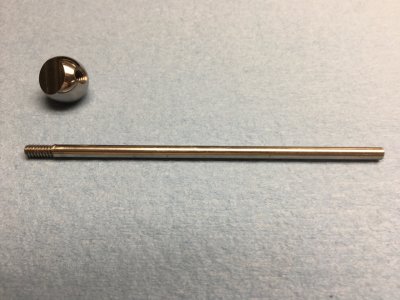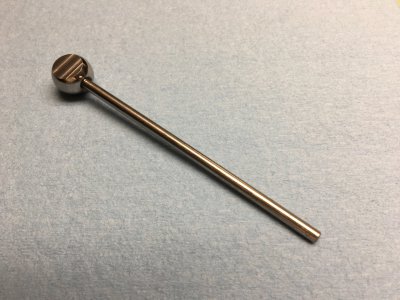I've used a flatted ball (with sandblasted flat surface against the workpiece) and a short length of suitably sized steel pipe (against the vise jaw). You can cut the chunk of pipe pretty short. As long as it holds the surface of the ball off the vise jaw, it won't cause a dimple. I'd suppose you could add a small rare earth magnet inside the pipe to help hold the arrangement together while closing the vise (making it a bit less fussy). It's not a perfect solution, and Bob does raise a couple more valid points. But the pipe-and-ball method is also quick and easy, and will accommodate larger part variations than squishable wire will.
My method is in reverse with the flat against the vice jaw, a 1/2" ball with a flat of one third of its diameter. If it puts a small dimple in the work piece it is no big deal, generally in squaring blocks it will be machined out any way.
Main thing it keeps the pressure down the center line of the vice and if the ball is positioned slightly bellow the center height of the jaw it will help to minimize jaw lift.




